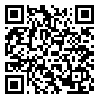BibTeX | RIS | EndNote | Medlars | ProCite | Reference Manager | RefWorks
Send citation to:
URL: http://jdm.tums.ac.ir/article-1-129-en.html
Background and Aim: Due to the complications associated with fixation by Titanium screws and plates in Bilateral Sagittal Split Ramus Osteotomy (BSSRO) surgery, the use of resorbable polymers has been increasingly recommended. Since there are not enough studies on this issue, this study aimed to assess the most appropriate stress distribution in fixation with resorbable screws after BSSRO surgery by Fnite Element Analysis (FEA).
Materials and Methods: This experimental study was performed on simulated human mandible using Ansys and Catia softwares. The osteotomy line was applied to the simulated model and experimental loads of 75, 135 and 600 N were respectively exerted according to the natural direction of occlusal force. The distribution pattern of stress was assessed and compared for fixation with one resorbable screw, two resorbable screws in vertical pattern, two resorbable screws in horizontal pattern, three resorbable screws in L pattern and three resorbable screws in inverted backward L pattern using Ansys software.
Results: Among the four simulated fixations, L pattern showed the highest primary stability. Two screws in vertical pattern were also associated with sufficient primary stability and less trauma and cost for patients. One screw did not provide enough stability under 600 N.
Conclusion: Polymer-based resorbable screws (polyglycolic acid and D, L polylactide acid) provided satisfactory primary stability in BSSRO surgery.
Received: 2009/01/18 | Accepted: 2009/08/26 | Published: 2013/10/1
| Rights and Permissions | |
 |
This work is licensed under a Creative Commons Attribution-NonCommercial 4.0 International License. |




